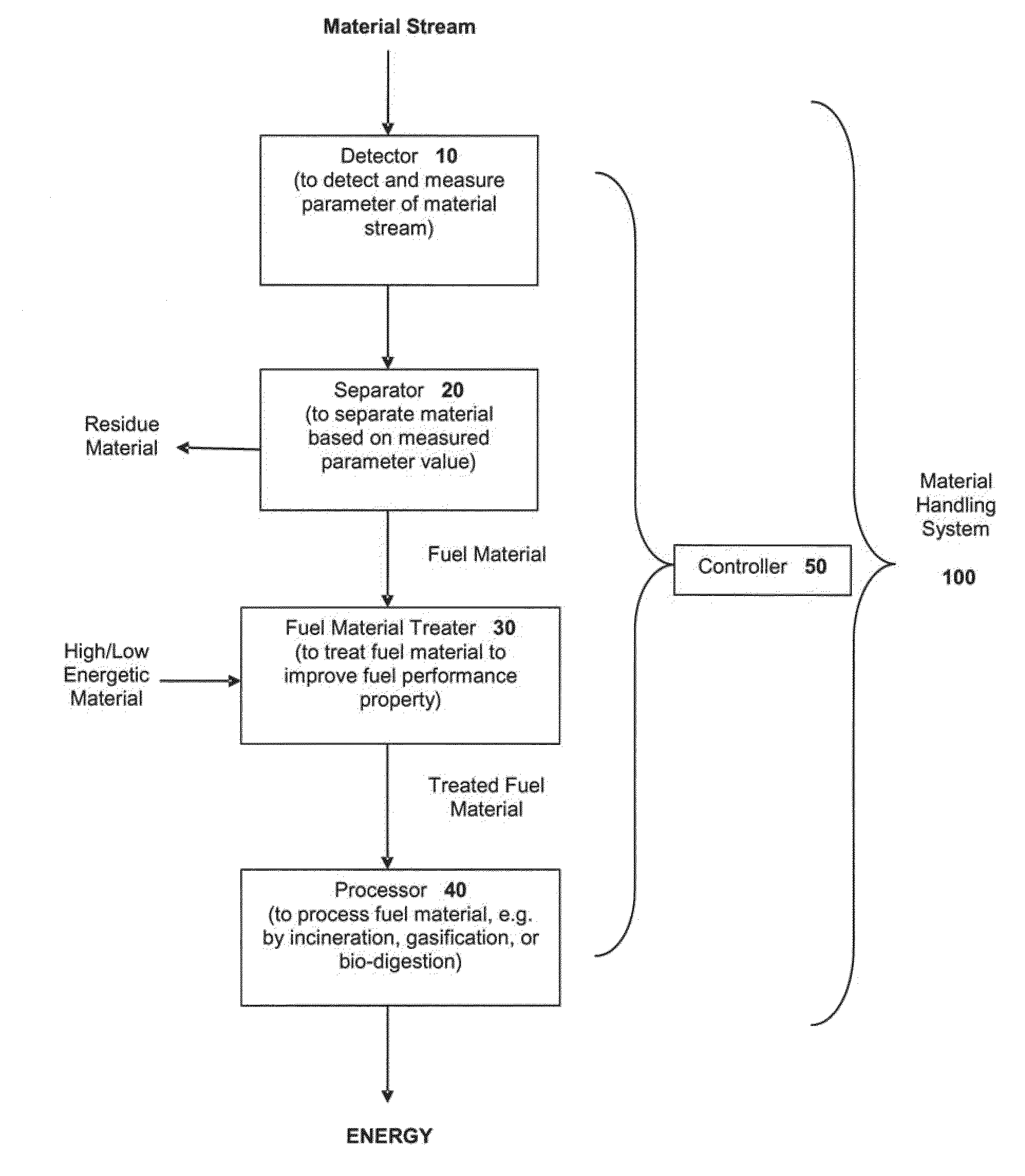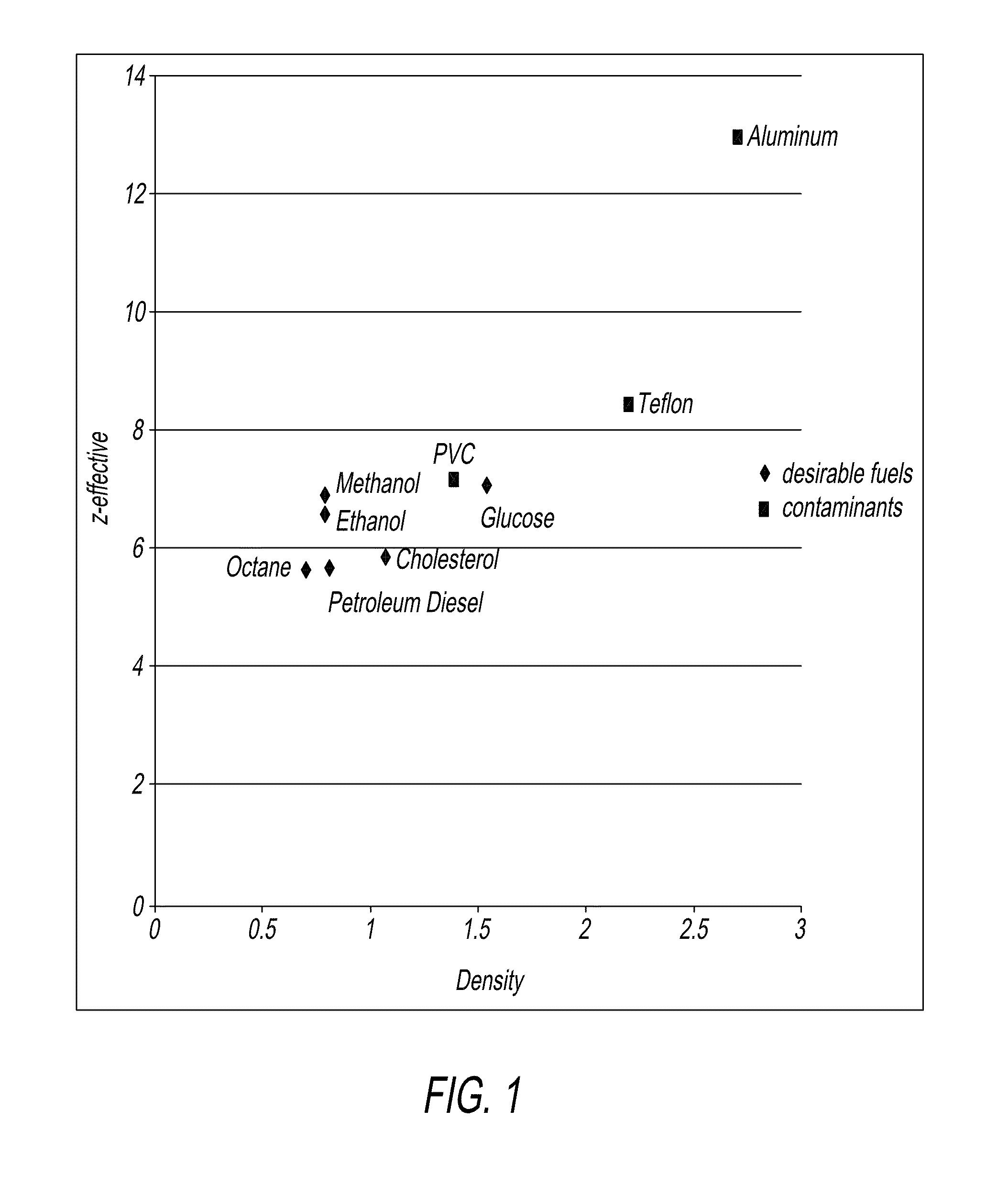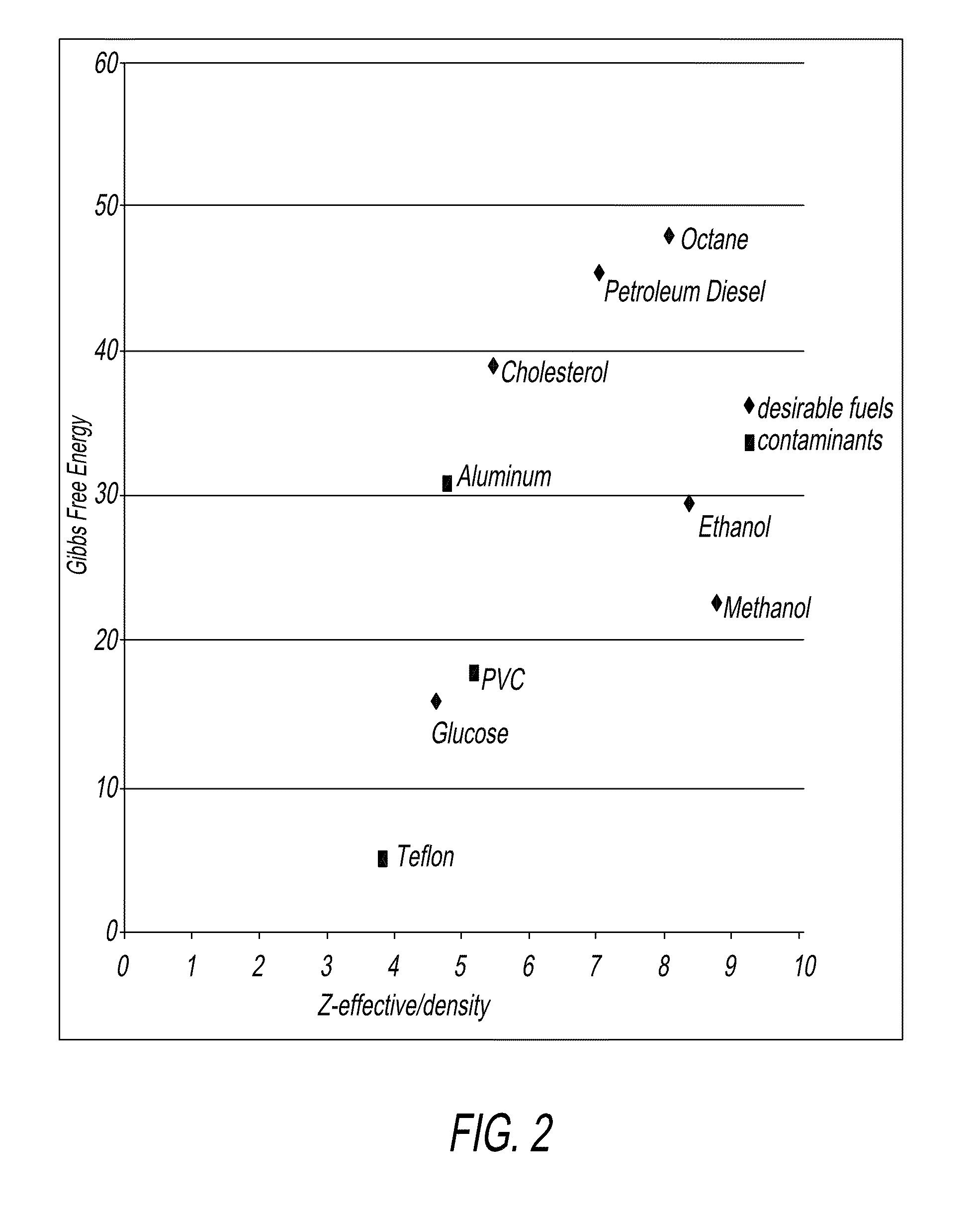Systems And Methods For Segregating Mixed Material Streams
a technology of mixed materials and systems, applied in the field of material handling, can solve the problems of inability to quantify a standard, no continuous method has been employed for inspection, and the manufacturer of gasification plant is limited in the number and location of plants, so as to achieve the effect of being easy to determin
- Summary
- Abstract
- Description
- Claims
- Application Information
AI Technical Summary
Benefits of technology
Problems solved by technology
Method used
Image
Examples
example 1
[0058]In this example, the method includes passing a material stream through a dual-energy x-ray and measuring Zeff and density of the material stream. If Zeff is greater than 8, do not select for fuel, and designate as residue. If density is equal to or greater than the density of PVC, then do not select for fuel, and designate as residue. If the measured material stream portion has both a Zeff of less than 8, and a density of less than that of PVC, designate as fuel. After measuring, separate the material stream into a fuel stream material portion and a residue material portion.
example 2
[0059]In this example, once the fuel portion has been identified and separated from the residue, the quality of the fuel can be optimized through addition of a treatment material (e.g., high energetic material and / or low energetic material). In operation, if Zeff / density is equal to or less than the ratio for PVC, then do not use for fuel. If Zeff / density is equal to or greater than the ratio for cholesterol but lower than the ratio for octane, add a “cooling,” low energetic fuel to the mix to optimize performance, and if Zeff / density is equal to or greater than the ratio for octane, add a “warming,” high energetic fuel to optimize performance. However, the criteria may change depending, for example, upon the specific material stream being treated, and the energy generation method being used.
example 3
[0060]In this example, the quality of the fuel portion may further be improved by compensating for water content, for example by incorporating a measurement of the water content of the fuel material under inspection from an orthogonal technology and use that information to better determine density and Zeff of the non-water materials in order to optimize the fuel (and the water content) for the performance of the energy conversion technology. In operation, measure the water content using microwave, mm-wave or THz technology. Measure the dual-energy transmissivity of the material, and use the water content to mathematically eliminate the contribution of the water in the sample to the dual-energy transmissivity. These “water-content adjusted” results may then be used in the quality optimization process described above, for example, in Example 2. According to one technique, the fuel may be treated with wetter or drier fuel of known energetic content in order to optimize for both the ene...
PUM
| Property | Measurement | Unit |
|---|---|---|
| energy | aaaaa | aaaaa |
| energy | aaaaa | aaaaa |
| density | aaaaa | aaaaa |
Abstract
Description
Claims
Application Information
 Login to View More
Login to View More - R&D
- Intellectual Property
- Life Sciences
- Materials
- Tech Scout
- Unparalleled Data Quality
- Higher Quality Content
- 60% Fewer Hallucinations
Browse by: Latest US Patents, China's latest patents, Technical Efficacy Thesaurus, Application Domain, Technology Topic, Popular Technical Reports.
© 2025 PatSnap. All rights reserved.Legal|Privacy policy|Modern Slavery Act Transparency Statement|Sitemap|About US| Contact US: help@patsnap.com



